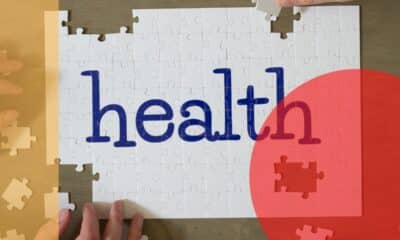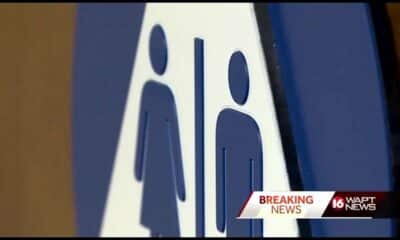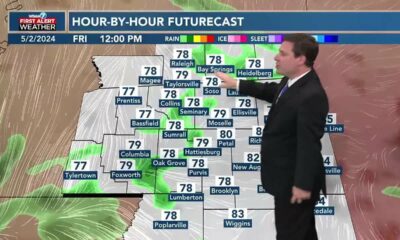Kaiser Health News
Ten Doctors on FDA Panel Reviewing Abbott Heart Device Had Financial Ties With Company
David Hilzenrath and Holly K. Hacker
Mon, 08 Apr 2024 09:00:00 +0000
When the FDA recently convened a committee of advisers to assess a cardiac device made by Abbott, the agency didn't disclose that most of them had received payments from the company or conducted research it had funded — information readily available in a federal database.
One member of the FDA advisory committee was linked to hundreds of payments from Abbott totaling almost $200,000, according to a database maintained by the Department of Health and Human Services. Another was connected to 100 payments totaling about $100,000 and conducted research supported by about $50,000 from Abbott. A third member of the committee worked on research supported by more than $180,000 from the company.
The government database, called “Open Payments,” records financial relationships between doctors and certain other health care providers and the makers of drugs and medical devices. KFF Health News found records of Abbott payments associated with 10 of the 14 voting members of the FDA advisory panel, which was weighing clinical evidence for a heart device called TriClip G4 System. The money, paid from 2016 through 2022 — the most recent year for which the database shows payments — adds up to about $650,000.
The panel voted almost unanimously that the benefits of the device outweigh its risks. Abbott announced on April 2 that the FDA had approved TriClip, which is designed to treat leakage from the heart's tricuspid valve.
The Abbott payments illustrate the reach of medical industry money and the limits of transparency at the FDA. They also shed light on how the agency weighs relationships between people who serve on its advisory panels and the makers of drugs and medical devices that those committees review as part of the regulatory approval process.
The payments do not reflect wrongdoing on the part of the agency, its outside experts, or the device manufacturer. The database does not show that any of the payments were related directly to the TriClip device.
But some familiar with the process, including people who have served on FDA advisory committees, said the payments should have been disclosed at the Feb. 13 meeting — if not as a regulatory requirement, then in the interest of transparency, because the money might call into question committee members' objectivity.
“This is a problem,” Joel Perlmutter, a former FDA advisory committee member and a professor of neurology at Washington University School of Medicine in St. Louis, said by email. “They should or must disclose this due to bias.”
The Open Payments database records several kinds of payments from drug and device makers. One category, called “associated research funding,” supports research in which a physician is named a principal investigator in the database. Another category, called “general payments,” includes consulting fees, travel expenses and meals connected to physicians in the database. The money can flow from manufacturers to third parties, such as hospitals, universities, or other corporate entities, but the database explicitly connects doctors by name to the payments.
At the public meeting to consider the TriClip device, an FDA official announced that committee members had been screened for potential financial conflicts of interest and found in compliance with government requirements.
FDA spokesperson Audra Harrison said by email that the agency doesn't comment on matters related to individual advisory committee members.
“The FDA followed all appropriate procedures and regulations in vetting these panel members and stands firmly by the integrity of the disclosure and vetting processes in place,” she said. “This includes ensuring advisory committee members do not have, or have the appearance of, a conflict of interest.”
Abbott “has no influence over who is selected to participate in FDA advisory committees,” a spokesperson for the company, Brent Tippen, said in a statement.
Diana Zuckerman, president of the National Center for Health Research, a think tank, said the FDA shouldn't have allowed recipients of funding from Abbott in recent years to sit in judgment of the Abbott product. The agency takes too narrow a view of what should be disqualifying, she said.
One committee member was Craig Selzman, chief of the Division of Cardiothoracic Surgery at the University of Utah. The Open Payments database connects to Selzman about $181,000 in associated research funding from Abbott to the University of Utah Hospitals & Clinics.
Asked in an interview if a reasonable person could question the impartiality of committee members based on the Abbott payments, Selzman said: “People from the outside looking in would probably say yes.”
He noted that Abbott's money went to the university, not to him personally. Participating in industry-funded clinical trials benefits doctors professionally, he said. He added: “There's probably a better way to provide transparency.”
The FDA has a history of appointing people to advisory committees who had relationships with manufacturers of the products under review. For example, in 2020, the doctor who chaired an FDA advisory committee reviewing Pfizer's covid-19 vaccine had been a Pfizer consultant.
Appearance Issues
FDA advisory committee candidates, selected to provide expert advice on often complicated drug and device applications, must complete a confidential disclosure report that asks about current and past financial interests as well as “anything that would give an ‘appearance' of a conflict.”
The FDA has discretion to decide whether someone with an “appearance issue” can serve on a panel, according to a guidance document posted on the agency's website. Relationships more than a year in the past generally don't give rise to appearance problems, according to the document, unless they suggest close ties to a company or involvement with the product under review. The main question is whether financial interests would cause a reasonable person to question the member's impartiality, the document says.
The FDA draws a distinction between appearance issues and financial conflicts of interest. Conflicts of interest occur when someone chosen to serve on an advisory committee has financial interests that “may be impacted” by their work on the committee, an FDA explainer says.
If the FDA finds a conflict of interest but still wants the applicant on a panel, it can issue a public waiver. None of the panelists voting on TriClip received a waiver.
The FDA's approach to disclosure contrasts with rules for conferences at which doctors earn credit for continuing medical education. For example, for a recent conference in Boston on technology for treatment of heart failure, including TriClip, the group holding the meeting directed speakers to include in their slide presentations disclosures going back 24 months.
Those disclosures — naming companies from which speakers had received consulting fees, grant support, travel expenses, and the like — also appeared on the conference website.
‘Unbridled Enthusiasm'
The FDA has designated TriClip a “breakthrough” device with “the potential to provide more effective treatment or diagnosis of a life-threatening or irreversibly debilitating disease” compared with current treatments, an agency official, Megan Naber, told the advisory committee.
Naber said that for breakthrough devices, the “totality of data must still provide a reasonable assurance of safety and effectiveness” but the FDA “may be willing to accept greater uncertainty” about the balance of risks and benefits.
In a briefing paper for the advisory committee, FDA staff pointed out findings from a clinical trial that didn't reflect well on TriClip. For example, patients treated with TriClip had “numerically higher” mortality and heart failure hospitalization rates during the 12 months after the procedure compared with a control group, according to the report. Tippen, the Abbott spokesperson, didn't respond to a request for comment on those findings.
The committee voted 14-0 that TriClip was safe for its intended use. The panel voted 12-2 that the device was effective, and it voted 13-1 that the benefits of TriClip outweighed the risks.
The committee member to whom the database attributes the most money from Abbott, Paul Hauptman, cast one of the votes against the device on effectiveness and the sole vote against the device on the bottom-line question of its risks versus benefits.
Hauptman said during the meeting that the question of safety was “very, very clear” but added: “I just felt the need to pull back a little bit on unbridled enthusiasm.” Who will benefit from the device, he said, “needs better definition.”
Hauptman, dean of the University of Nevada-Reno School of Medicine, is connected to 268 general payments from Abbott totaling about $197,000 in the Open Payments database. Some payments are listed as going to an entity called Keswick Cardiovascular.
Hauptman said in an email that he followed FDA guidance and added, “My impartiality speaks for itself based on my vote and critical comments.”
Some committee members voted in favor of the device despite concerns.
Marc Katz, chief of the Division of Cardiothoracic Surgery at the Medical University of South Carolina, is linked to 77 general payments totaling about $53,000 from Abbott and worked on research supported by about $10,000 from the company, according to Open Payments.
“I voted yes for safety, no for effectiveness, but then caved and voted yes for the benefits outweighing the risks,” he said in the meeting.
In an email, he said of his Abbott payments: “All was disclosed and reviewed by the FDA.” He said that he “can be impartial” and that he “openly expressed … concerns about the treatment.”
Mitchell Krucoff, a professor at Duke University School of Medicine, is connected to 100 general payments totaling about $105,000. Some went to a third party, HPIC Consulting. He also worked on research supported by about $51,000 from Abbott, according to Open Payments.
He said during the meeting that he voted in favor of the device on all three questions and added that doctors have “a lot to learn” once it's on the market. For instance: By using the device to treat patients now, “do we set people up for catastrophes later?”
In an email, Krucoff said he completed a “very thorough conflict of interest screening by FDA for this panel,” which focused not only on Abbott but also on “any work done/payments received from any other manufacturer with devices in this space.”
John Hirshfeld Jr., an emeritus professor of medicine at the University of Pennsylvania, is linked by the database to six general payments from Abbott totaling $6,000. Two of the payments linked to him went to a nonprofit, the Cardiovascular Research Foundation, according to the database. He voted yes on all three questions about TriClip but said at the meeting that he “would have liked to have seen more rigorous data to support efficacy.”
In an email, Hirshfeld said he disclosed the payments to the FDA. The agency did not deem him to have a conflict because he had no stake in Abbott's success and his involvement with the company had ended, he said. Through the conflict-of-interest screening process, he said, he had been excluded from prior advisory panels.
——————————
By: David Hilzenrath and Holly K. Hacker
Title: Ten Doctors on FDA Panel Reviewing Abbott Heart Device Had Financial Ties With Company
Sourced From: kffhealthnews.org/news/article/abbott-triclip-fda-advisory-panel-payments-funding-conflict-of-interest/
Published Date: Mon, 08 Apr 2024 09:00:00 +0000
Did you miss our previous article…
https://www.biloxinewsevents.com/rising-complaints-of-unauthorized-obamacare-plan-switching-and-sign-ups-trigger-concern/
Kaiser Health News
California Floats Extending Health Insurance Subsidies to All Adult Immigrants
Jasmine Aguilera, El Tímpano
Fri, 03 May 2024 09:00:00 +0000
Marisol Pantoja Toribio found a lump in her breast in early January. Uninsured and living in California without legal status and without her family, the usually happy-go-lucky 43-year-old quickly realized how limited her options were.
“I said, ‘What am I going to do?'” she said in Spanish, quickly getting emotional. She immediately worried she might have cancer. “I went back and forth — I have [cancer], I don't have it, I have it, I don't have it.” And if she was sick, she added, she wouldn't be able to work or pay her rent. Without health insurance, Pantoja Toribio couldn't afford to find out if she had a serious condition.
Beginning this year, Medi-Cal, California's Medicaid program, expanded to include immigrants lacking legal residency, timing that could have worked out perfectly for Pantoja Toribio, who has lived in the Bay Area city of Brentwood for three years. But her application for Medi-Cal was quickly rejected: As a farmworker earning $16 an hour, her annual income of roughly $24,000 was too high to qualify for the program.
California is the first state to expand Medicaid to all qualifying adults regardless of immigration status, a move celebrated by health advocates and political leaders across the state. But many immigrants without permanent legal status, especially those who live in parts of California where the cost of living is highest, earn slightly too much money to qualify for Medi-Cal.
The state is footing the bill for the Medi-Cal expansion, but federal law bars those it calls “undocumented” from receiving insurance subsidies or other benefits from the Affordable Care Act, leaving many employed but without viable health insurance options.
Now, the same health advocates who fought for the Medi-Cal expansion say the next step in achieving health equity is expanding Covered California, the state's ACA marketplace, to all immigrant adults by passing AB 4.
“There are people in this state who work and are the backbone of so many sectors of our economy and contribute their labor and even taxes … but they are locked out of our social safety net,” said Sarah Dar, policy director at the California Immigrant Policy Center, one of two organizations sponsoring the bill, dubbed #Health4All.
To qualify for Medi-Cal, an individual cannot earn more than 138% of the federal poverty level, which currently amounts to nearly $21,000 a year for a single person. A family of three would need to earn less than $35,632 a year.
For people above those thresholds, the Covered California marketplace offers various health plans, often with federal and state subsidies, yielding premiums as low as $10 a month. The hope is to create what advocates call a “mirror marketplace” on the Covered California website so that immigrants regardless of status can be offered the same health plans that would be subsidized only by the state.
Despite a Democratic supermajority in the legislature, the bill might struggle to pass, with the state facing a projected budget deficit for next year of anywhere from $38 billion to $73 billion. Gov. Gavin Newsom and legislative leaders announced a $17 billion package to start reducing the gap, but significant spending cuts appear inevitable.
It's not clear how much it would cost to extend Covered California to all immigrants, according to Assembly member Joaquin Arambula, the Fresno Democrat who introduced the bill.
The immigrant policy center estimates that setting up the marketplace would cost at least $15 million. If the bill passes, sponsors would then need to secure funding for the subsidies, which could run into the billions of dollars annually.
“It is a tough time to be asking for new expenditures,” Dar said. “The mirror marketplace startup cost is a relatively very low number. So we're hopeful that it's still within the realm of possibility.”
Arambula said he's optimistic the state will continue to lead in improving access to health care for immigrants who lack legal residency.
“I believe we will continue to stand up, as we are working to make this a California for all,” he said.
The bill passed the Assembly last July on a 64-9 vote and now awaits action by the Senate Appropriations Committee, Arambula's office said.
An estimated 520,000 people in California would qualify for a Covered California plan if not for their lack of legal status, according to the labor research center at the University of California-Berkeley. Pantoja Toribio, who emigrated alone from Mexico after leaving an abusive relationship, said she was lucky. She learned about alternative health care options when she made her weekly visit to a food pantry at Hijas del Campo, a Contra Costa County farmworker advocacy organization, where they told her she might qualify for a plan for low-income people through Kaiser Permanente.
Pantoja Toribio applied just before open enrollment closed at the end of January. Through the plan, she learned that the lump in her breast was not cancerous.
“God heard me,” she said. “Thank God.”
This article was produced by KFF Health News, which publishes California Healthline, an editorially independent service of the California Health Care Foundation.
——————————
By: Jasmine Aguilera, El Tímpano
Title: California Floats Extending Health Insurance Subsidies to All Adult Immigrants
Sourced From: kffhealthnews.org/news/article/california-legislation-medicaid-subsidies-all-adult-immigrants/
Published Date: Fri, 03 May 2024 09:00:00 +0000
Did you miss our previous article…
https://www.biloxinewsevents.com/bird-flu-is-bad-for-poultry-and-dairy-cows-its-not-a-dire-threat-for-most-of-us-yet/
Kaiser Health News
Bird Flu Is Bad for Poultry and Dairy Cows. It’s Not a Dire Threat for Most of Us — Yet.
Amy Maxmen
Fri, 03 May 2024 09:00:00 +0000
Headlines are flying after the Department of Agriculture confirmed that the H5N1 bird flu virus has infected dairy cows around the country. Tests have detected the virus among cattle in nine states, mainly in Texas and New Mexico, and most recently in Colorado, said Nirav Shah, principal deputy director at the Centers for Disease Control and Prevention, at a May 1 event held by the Council on Foreign Relations.
A menagerie of other animals have been infected by H5N1, and at least one person in Texas. But what scientists fear most is if the virus were to spread efficiently from person to person. That hasn't happened and might not. Shah said the CDC considers the H5N1 outbreak “a low risk to the general public at this time.”
Viruses evolve and outbreaks can shift quickly. “As with any major outbreak, this is moving at the speed of a bullet train,” Shah said. “What we'll be talking about is a snapshot of that fast-moving train.” What he means is that what's known about the H5N1 bird flu today will undoubtedly change.
With that in mind, KFF Health News explains what you need to know now.
Q: Who gets the bird flu?
Mainly birds. Over the past few years, however, the H5N1 bird flu virus has increasingly jumped from birds into mammals around the world. The growing list of more than 50 species includes seals, goats, skunks, cats, and wild bush dogs at a zoo in the United Kingdom. At least 24,000 sea lions died in outbreaks of H5N1 bird flu in South America last year.
What makes the current outbreak in cattle unusual is that it's spreading rapidly from cow to cow, whereas the other cases — except for the sea lion infections — appear limited. Researchers know this because genetic sequences of the H5N1 viruses drawn from cattle this year were nearly identical to one another.
The cattle outbreak is also concerning because the country has been caught off guard. Researchers examining the virus's genomes suggest it originally spilled over from birds into cows late last year in Texas, and has since spread among many more cows than have been tested. “Our analyses show this has been circulating in cows for four months or so, under our noses,” said Michael Worobey, an evolutionary biologist at the University of Arizona in Tucson.
Q: Is this the start of the next pandemic?
Not yet. But it's a thought worth considering because a bird flu pandemic would be a nightmare. More than half of people infected by older strains of H5N1 bird flu viruses from 2003 to 2016 died. Even if death rates turn out to be less severe for the H5N1 strain currently circulating in cattle, repercussions could involve loads of sick people and hospitals too overwhelmed to handle other medical emergencies.
Although at least one person has been infected with H5N1 this year, the virus can't lead to a pandemic in its current state. To achieve that horrible status, a pathogen needs to sicken many people on multiple continents. And to do that, the H5N1 virus would need to infect a ton of people. That won't happen through occasional spillovers of the virus from farm animals into people. Rather, the virus must acquire mutations for it to spread from person to person, like the seasonal flu, as a respiratory infection transmitted largely through the air as people cough, sneeze, and breathe. As we learned in the depths of covid-19, airborne viruses are hard to stop.
That hasn't happened yet. However, H5N1 viruses now have plenty of chances to evolve as they replicate within thousands of cows. Like all viruses, they mutate as they replicate, and mutations that improve the virus's survival are passed to the next generation. And because cows are mammals, the viruses could be getting better at thriving within cells that are closer to ours than birds'.
The evolution of a pandemic-ready bird flu virus could be aided by a sort of superpower possessed by many viruses. Namely, they sometimes swap their genes with other strains in a process called reassortment. In a study published in 2009, Worobey and other researchers traced the origin of the H1N1 “swine flu” pandemic to events in which different viruses causing the swine flu, bird flu, and human flu mixed and matched their genes within pigs that they were simultaneously infecting. Pigs need not be involved this time around, Worobey warned.
Q: Will a pandemic start if a person drinks virus-contaminated milk?
Not yet. Cow's milk, as well as powdered milk and infant formula, sold in stores is considered safe because the law requires all milk sold commercially to be pasteurized. That process of heating milk at high temperatures kills bacteria, viruses, and other teeny organisms. Tests have identified fragments of H5N1 viruses in milk from grocery stores but confirm that the virus bits are dead and, therefore, harmless.
Unpasteurized “raw” milk, however, has been shown to contain living H5N1 viruses, which is why the FDA and other health authorities strongly advise people not to drink it. Doing so could cause a person to become seriously ill or worse. But even then, a pandemic is unlikely to be sparked because the virus — in its current form — does not spread efficiently from person to person, as the seasonal flu does.
Q: What should be done?
A lot! Because of a lack of surveillance, the U.S. Department of Agriculture and other agencies have allowed the H5N1 bird flu to spread under the radar in cattle. To get a handle on the situation, the USDA recently ordered all lactating dairy cattle to be tested before farmers move them to other states, and the outcomes of the tests to be reported.
But just as restricting covid tests to international travelers in early 2020 allowed the coronavirus to spread undetected, testing only cows that move across state lines would miss plenty of cases.
Such limited testing won't reveal how the virus is spreading among cattle — information desperately needed so farmers can stop it. A leading hypothesis is that viruses are being transferred from one cow to the next through the machines used to milk them.
To boost testing, Fred Gingrich, executive director of a nonprofit organization for farm veterinarians, the American Association of Bovine Practitioners, said the government should offer funds to cattle farmers who report cases so that they have an incentive to test. Barring that, he said, reporting just adds reputational damage atop financial loss.
“These outbreaks have a significant economic impact,” Gingrich said. “Farmers lose about 20% of their milk production in an outbreak because animals quit eating, produce less milk, and some of that milk is abnormal and then can't be sold.”
The government has made the H5N1 tests free for farmers, Gingrich added, but they haven't budgeted money for veterinarians who must sample the cows, transport samples, and file paperwork. “Tests are the least expensive part,” he said.
If testing on farms remains elusive, evolutionary virologists can still learn a lot by analyzing genomic sequences from H5N1 viruses sampled from cattle. The differences between sequences tell a story about where and when the current outbreak began, the path it travels, and whether the viruses are acquiring mutations that pose a threat to people. Yet this vital research has been hampered by the USDA's slow and incomplete posting of genetic data, Worobey said.
The government should also help poultry farmers prevent H5N1 outbreaks since those kill many birds and pose a constant threat of spillover, said Maurice Pitesky, an avian disease specialist at the University of California-Davis.
Waterfowl like ducks and geese are the usual sources of outbreaks on poultry farms, and researchers can detect their proximity using remote sensing and other technologies. By zeroing in on zones of potential spillover, farmers can target their attention. That can mean routine surveillance to detect early signs of infections in poultry, using water cannons to shoo away migrating flocks, relocating farm animals, or temporarily ushering them into barns. “We should be spending on prevention,” Pitesky said.
Q: OK it's not a pandemic, but what could happen to people who get this year's H5N1 bird flu?
No one really knows. Only one person in Texas has been diagnosed with the disease this year, in April. This person worked closely with dairy cows, and had a mild case with an eye infection. The CDC found out about them because of its surveillance process. Clinics are supposed to alert state health departments when they diagnose farmworkers with the flu, using tests that detect influenza viruses, broadly. State health departments then confirm the test, and if it's positive, they send a person's sample to a CDC laboratory, where it is checked for the H5N1 virus, specifically. “Thus far we have received 23,” Shah said. “All but one of those was negative.”
State health department officials are also monitoring around 150 people, he said, who have spent time around cattle. They're checking in with these farmworkers via phone calls, text messages, or in-person visits to see if they develop symptoms. And if that happens, they'll be tested.
Another way to assess farmworkers would be to check their blood for antibodies against the H5N1 bird flu virus; a positive result would indicate they might have been unknowingly infected. But Shah said health officials are not yet doing this work.
“The fact that we're four months in and haven't done this isn't a good sign,” Worobey said. “I'm not super worried about a pandemic at the moment, but we should start acting like we don't want it to happen.”
——————————
By: Amy Maxmen
Title: Bird Flu Is Bad for Poultry and Dairy Cows. It's Not a Dire Threat for Most of Us — Yet.
Sourced From: kffhealthnews.org/news/article/bird-flu-h5n1-risks-questions-answered/
Published Date: Fri, 03 May 2024 09:00:00 +0000
Kaiser Health News
KFF Health News’ ‘What the Health?’: Abortion Access Changing Again in Florida and Arizona
Thu, 02 May 2024 19:30:00 +0000
The Host
Julie Rovner is chief Washington correspondent and host of KFF Health News' weekly health policy news podcast, “What the Health?” A noted expert on health policy issues, Julie is the author of the critically praised reference book “Health Care Politics and Policy A to Z,” now in its third edition.
The national abortion landscape was shaken again this week as Florida's six-week abortion ban took effect. That leaves North Carolina and Virginia as the lone Southern states where abortion remains widely available. Clinics in those states already were overflowing with patients from across the region.
Meanwhile, in a wide-ranging interview with Time magazine, former President Donald Trump took credit for appointing the Supreme Court justices who overturned Roe v. Wade, but he steadfastly refused to say what he might do on the abortion issue if he is returned to office.
This week's panelists are Julie Rovner of KFF Health News, Sarah Karlin-Smith of the Pink Sheet, Alice Miranda Ollstein of Politico, and Rachana Pradhan of KFF Health News.
Panelists
Sarah Karlin-Smith
Pink Sheet
Alice Miranda Ollstein
Politico
Rachana Pradhan
KFF Health News
Among the takeaways from this week's episode:
- Florida's new, six-week abortion ban is a big deal for the entire South, as the state had been an abortion haven for patients as other states cut access to the procedure. Some clinics in North Carolina and southern Virginia are considering expansions to their waiting and recovery rooms to accommodate patients who now must travel there for care. This also means, though, that those traveling patients could make waits even longer for local patients, including many who rely on the clinics for non-abortion services.
- Passage of a bill to repeal Arizona's near-total abortion ban nonetheless leaves the state's patients and providers with plenty of uncertainty — including whether the ban will temporarily take effect anyway. Plus, voters in Arizona, as well as those in Florida, will have an opportunity in November to weigh in on whether the procedure should be available in their state.
- The FDA's decision that laboratory-developed tests must be subject to the same regulatory scrutiny as medical devices comes as the tests have become more prevalent — and as concerns have grown amid high-profile examples of problems occurring because they evaded federal review. (See: Theranos.) There's a reasonable chance the FDA will be sued over whether it has the authority to make these changes without congressional action.
- Also, the Biden administration has quietly decided to shelve a potential ban on menthol cigarettes. The issue raised tensions over its links between health and criminal justice, and it ultimately appears to have run into electoral-year headwinds that prompted the administration to put it aside rather than risk alienating Black voters.
- In drug news, the Federal Trade Commission is challenging what it sees as “junk” patents that make it tougher for generics to come to market, and another court ruling delivers bad news for the pharmaceutical industry's fight against Medicare drug negotiations.
Plus, for “extra credit” the panelists suggest health policy stories they read this week that they think you should read, too:
Julie Rovner: ProPublica's “A Doctor at Cigna Said Her Bosses Pressured Her To Review Patients' Cases Too Quickly. Cigna Threatened To Fire Her,” by Patrick Rucker, The Capitol Forum, and David Armstrong, ProPublica.
Alice Miranda Ollstein: The Associated Press' “Dozens of Deaths Reveal Risks of Injecting Sedatives Into People Restrained by Police,” by Ryan J. Foley, Carla K. Johnson, and Shelby Lum.
Sarah Karlin-Smith: The Atlantic's “America's Infectious-Disease Barometer Is Off,” by Katherine J. Wu.
Rachana Pradhan: The Wall Street Journal's “Millions of American Kids Are Caregivers Now: ‘The Hardest Part Is That I'm Only 17,” by Clare Ansberry.
Also mentioned on this week's podcast:
- Time's “How Far Trump Would Go,” by Eric Cortellessa.
- NPR's “Why Is a 6-Week Abortion Ban Nearly a Total Ban? It's About How We Date a Pregnancy,” by Selena Simmons-Duffin.
- NPR's “'Sicko's' Peeno Sees Few Gains in Health Insurance,” by Julie Rovner.
- CNN's “Walmart Will Close All of Its Health Care Clinics,” by Nathaniel Meyersohn.
Credits
Francis Ying
Audio producer
Emmarie Huetteman
Editor
To hear all our podcasts, click here.
And subscribe to KFF Health News' “What the Health?” on Spotify, Apple Podcasts, Pocket Casts, or wherever you listen to podcasts.
——————————
Title: KFF Health News' ‘What the Health?': Abortion Access Changing Again in Florida and Arizona
Sourced From: kffhealthnews.org/news/podcast/what-the-health-345-abortion-access-florida-arizona-may-2-2024/
Published Date: Thu, 02 May 2024 19:30:00 +0000
-
Mississippi Today5 days ago
On this day in 1951
-
Mississippi News6 days ago
One injured in Mississippi officer-involved shooting after chase
-
SuperTalk FM4 days ago
Festival merger in Leland sets up one major event for Mississippi Delta
-
SuperTalk FM18 hours ago
Driver’s education set to become mandatory in Mississippi as bill passes
-
SuperTalk FM4 days ago
PERS bill set to phase in employer rate increase heads to governor’s desk
-
Mississippi Business2 days ago
Geartek expanding operations in Alcorn County
-
Mississippi News3 days ago
Two women accused of shoplifting across southeast captured in Mississippi
-
SuperTalk FM7 days ago
Investigation underway after gun found in backpack of Ridgeland High School student





































